Retrospective of Civilization II

“How do you make a sequel to a game that covered all of human history?” ~ Brian Reynolds
By Patric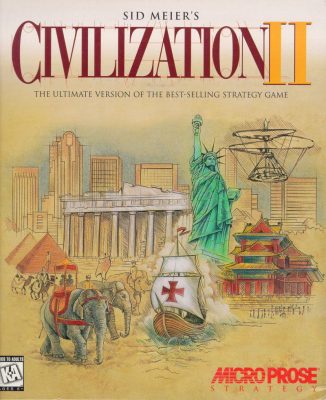 k S. Baker
k S. Baker
The thunderous success of the original Sid Meier’s Civilization (Civ I) in 1991, today would demand a sequel, and quickly, but back in the dark days of the early 1990s that just wasn’t so. In fact, the game that would become Sid Meier’s Civilization II (Civ II) was the first direct sequel that MicroProse would develop and market.
MicroProse management assigned the sequel development task to Brian Reynolds. Reynolds was no newbie to the game design and development business. He went to work for MicroProse in 1991, developing adventure games like Return of the Phantom. He had also previously collaborated with Sid Meier on Sid Meier’s Colonization. But none of his experience answered the basic question to which he needed a good response: “How do you make a sequel to a game that covered all of human history?”
Reynolds went to the source first, Meier himself. Reynolds later said: “We (he and Meier) sat down and brainstormed about it and hashed out ideas…” but Meier had little else to do with the game which would still bear his name.
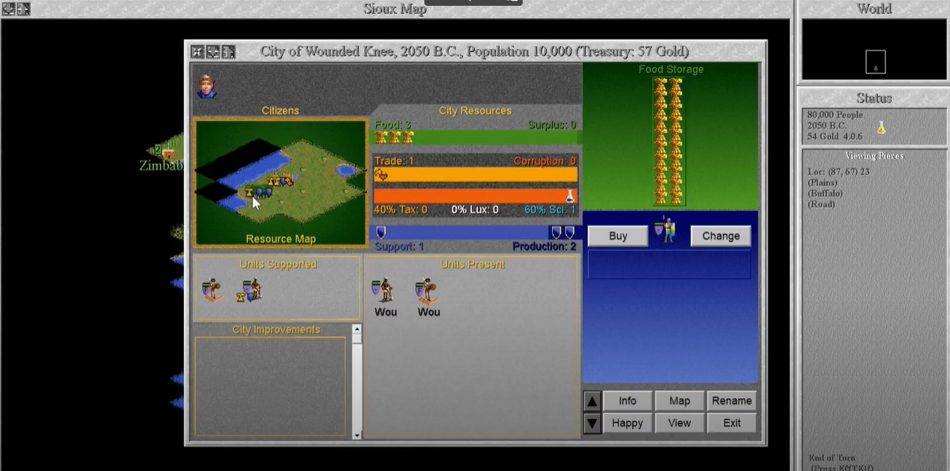 Reynolds was joined by Jeff Briggs and Douglas Kaufman (AKA Douglas Caspian-Kaufman) as co-developers and producers. The three decided to use the then latest technologies for the sequel. They coded the game to play on the Windows 95 operating system and the Video Graphics Array (VGA) video graphic standard. The team also had a long list of sought-after improvements from Civ I players, who had posted on the Usenet groups, letting MicroProse know what the players wanted to see in the next game.
Reynolds was joined by Jeff Briggs and Douglas Kaufman (AKA Douglas Caspian-Kaufman) as co-developers and producers. The three decided to use the then latest technologies for the sequel. They coded the game to play on the Windows 95 operating system and the Video Graphics Array (VGA) video graphic standard. The team also had a long list of sought-after improvements from Civ I players, who had posted on the Usenet groups, letting MicroProse know what the players wanted to see in the next game.
The most obvious difference between the two games was that the map was switched from a top-down point of view (POV) to an isometric POV. This added a great deal of texture and depth to the map view.
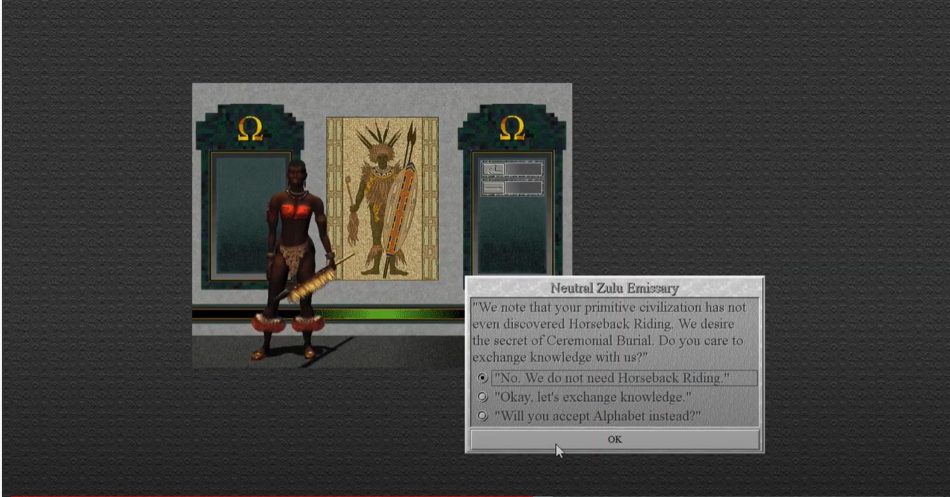 The team also made dozens of other changes and improvements both large and small. For example, they added the infamous ‘Deity’ level. They also added seven new playable civilizations, going from fourteen to twenty-one, the new civilizations included Vikings, Sioux, Persian, and Spain. Further, twenty-two new technologies, like ‘Miniaturization’ were added to the ‘technology tree’.
The team also made dozens of other changes and improvements both large and small. For example, they added the infamous ‘Deity’ level. They also added seven new playable civilizations, going from fourteen to twenty-one, the new civilizations included Vikings, Sioux, Persian, and Spain. Further, twenty-two new technologies, like ‘Miniaturization’ were added to the ‘technology tree’.
Perhaps most important to the players was the improvements to ‘Diplomacy’ which allowed for alliances and peace treaties that would force one civilization to remove its units from another civilization’s territory. Also, combat was enhanced with a unit ‘hit-point’ system which made Civ II’s combat much more tactical and avoided those oddball situations where a “phalanx could stand up to a battleship.”
The development team also added the ‘High Council’, a group of advisors in five areas: Military, Science, Trade, Foreign and Attitude. The advisors provided in-game advice and explanations as well as argued with each other. Many players found the ‘High Council’ to be both helpful and annoying in equal measure.
 Furthermore, over Meier’s objections, Reynolds added a user modification system (modding) to the game. Meier worried that the players “would probably be terrible at it (modding)…” and blamed the game designers for all their terrible mods. Meier ended up realizing that he was “wrong on all counts” and modding is why many of his games thrived.
Furthermore, over Meier’s objections, Reynolds added a user modification system (modding) to the game. Meier worried that the players “would probably be terrible at it (modding)…” and blamed the game designers for all their terrible mods. Meier ended up realizing that he was “wrong on all counts” and modding is why many of his games thrived.
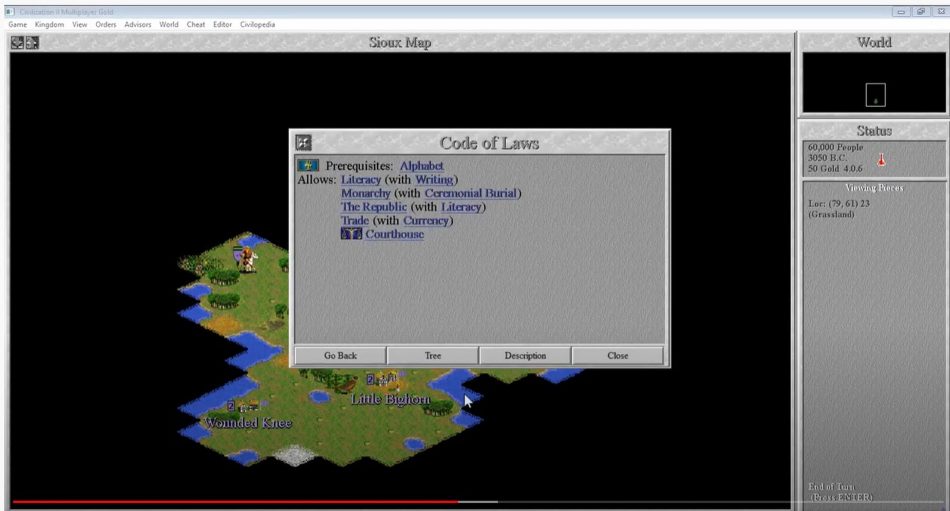 The game was released in February 1996 with little fanfare and almost no marketing support from MicroProse. In 1993 Spectrum Holobyte purchased MicroProse. Spectrum Holobyte’s management had no faith in the game and thought that it would be a poor seller, so they did not want to throw good money after bad by spending money on marketing.
The game was released in February 1996 with little fanfare and almost no marketing support from MicroProse. In 1993 Spectrum Holobyte purchased MicroProse. Spectrum Holobyte’s management had no faith in the game and thought that it would be a poor seller, so they did not want to throw good money after bad by spending money on marketing.
Spectrum Holobyte’s management could not have been more wrong about the game’s sales. Word of mouth via various gaming message boards saved the game. For example, in America alone, Civ II sold 482,522 units and earned more than $21 million dollars by the end of 1996. By the start of 1997 worldwide sales of Civ II exceeded 720,000 copies.
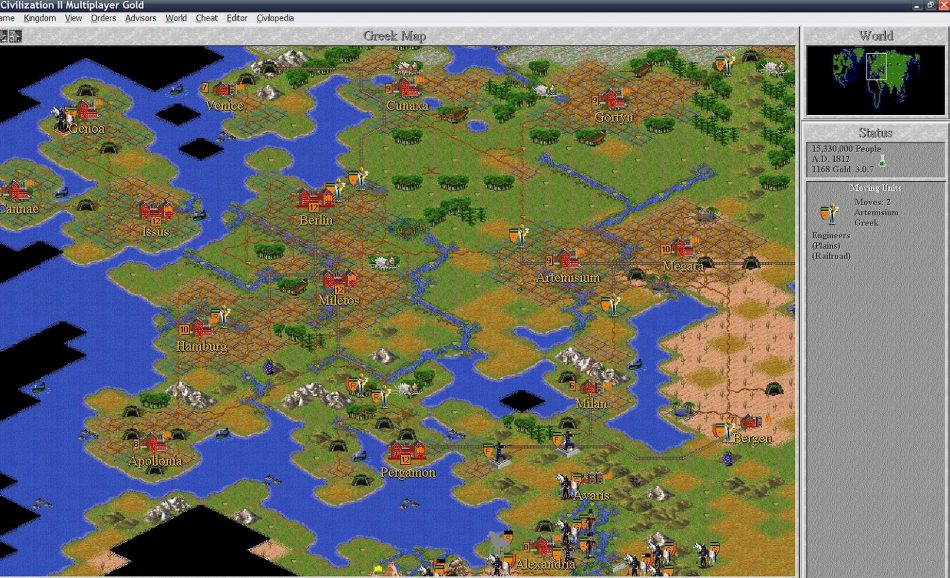 Civ II won serious accolades from the gaming community. Metacritic has the game at 94% positive reviews. Computer Gaming World bestowed Civ II its Strategy Game of the Year award. PC Gamer US named the game the overall Game of the Year. Civ II also won Computer Games Strategy Plus’s 1996 award for the Best Turn-Based Strategy Game of the Year.
Civ II won serious accolades from the gaming community. Metacritic has the game at 94% positive reviews. Computer Gaming World bestowed Civ II its Strategy Game of the Year award. PC Gamer US named the game the overall Game of the Year. Civ II also won Computer Games Strategy Plus’s 1996 award for the Best Turn-Based Strategy Game of the Year.
Despite Spectrum Holobyte’s disturbing lack of faith in the game, that kind of sales and critical reception virtually guaranteed another Civilization sequel.
Patrick S. Baker is a former US Army Field Artillery officer and retired Department of Defense employee. He has degrees in History, Political Science and Education. He has been writing history, game reviews and science-fiction professionally since 2013. Some of his other work can found at Sirius Science Fiction, Sci-Phi Journal, Armchair General and Historynet.com
Sources:
Computer Game Review (July 1996). “Interview with Brian Reynolds”.
Computer Games Strategy Plus (January 1997) “Ch-ching – Westwood cashes in”
Computer Games Strategy Plus. (March 1997). “Computer Games Strategy Plus announces 1996 Awards”.
Computer Gaming World (May 1997)
Los Angeles Times (3 March 1997) “Myst Opportunities: Game Makers Narrow Their Focus to Search for the Next Blockbuster”
Metacritic Sid Meier’s Civilization II
NEXT Generation (April 1996) Civilization 2
NEXT Generation (July 1997) “Spotlight Award Winners”.
PC Gamer: The Complete History of Civilization, Civilization 2
PCGamesN: Civ 2 at 25
Sid Meier with Jennifer Lee Noonan: Sid Meier’s Memoir!: A Life in Computer Games (New York: W. W. Norton, 2020)
